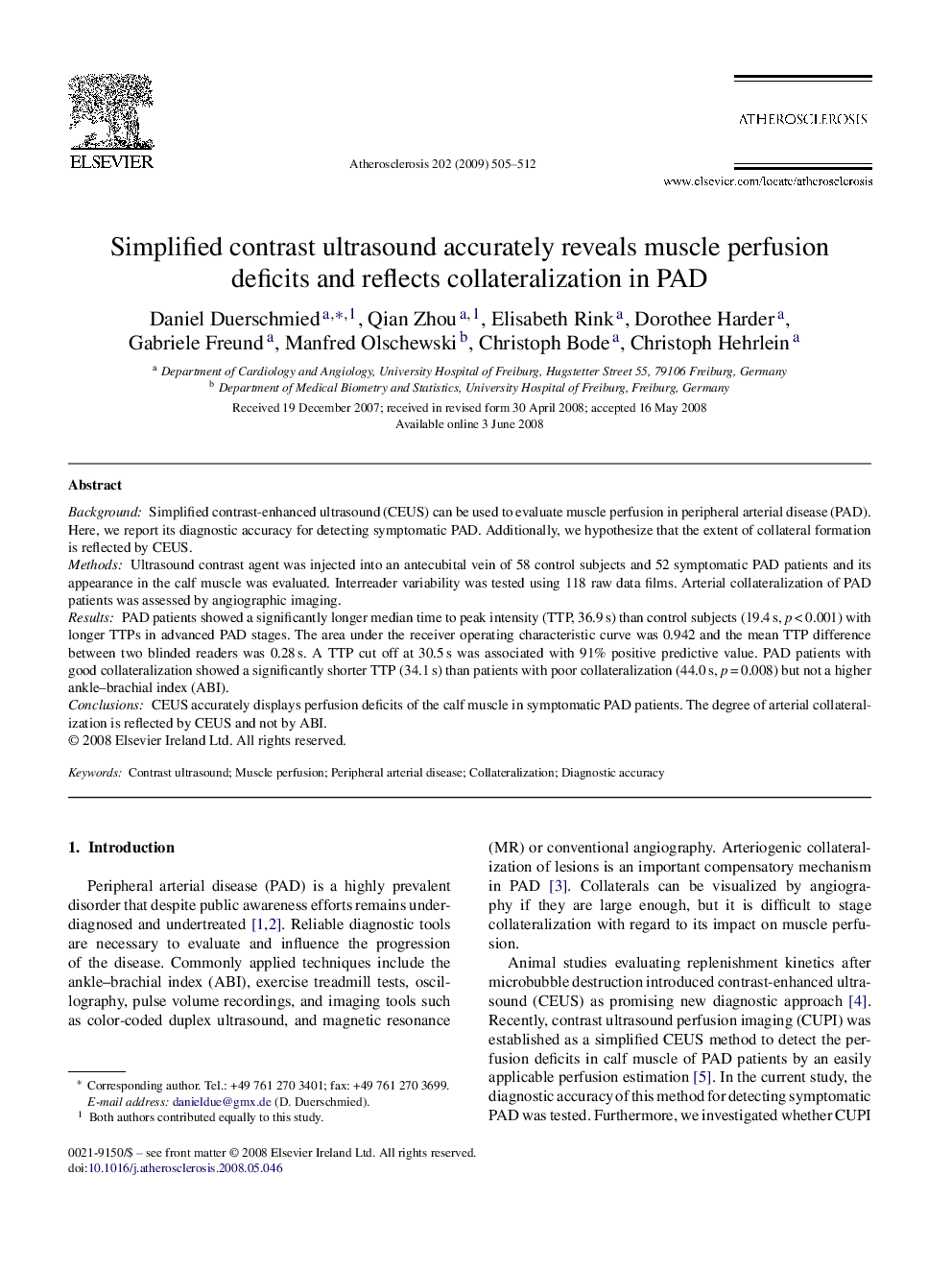| Article ID | Journal | Published Year | Pages | File Type |
|---|---|---|---|---|
| 2893827 | Atherosclerosis | 2009 | 8 Pages |
BackgroundSimplified contrast-enhanced ultrasound (CEUS) can be used to evaluate muscle perfusion in peripheral arterial disease (PAD). Here, we report its diagnostic accuracy for detecting symptomatic PAD. Additionally, we hypothesize that the extent of collateral formation is reflected by CEUS.MethodsUltrasound contrast agent was injected into an antecubital vein of 58 control subjects and 52 symptomatic PAD patients and its appearance in the calf muscle was evaluated. Interreader variability was tested using 118 raw data films. Arterial collateralization of PAD patients was assessed by angiographic imaging.ResultsPAD patients showed a significantly longer median time to peak intensity (TTP, 36.9 s) than control subjects (19.4 s, p < 0.001) with longer TTPs in advanced PAD stages. The area under the receiver operating characteristic curve was 0.942 and the mean TTP difference between two blinded readers was 0.28 s. A TTP cut off at 30.5 s was associated with 91% positive predictive value. PAD patients with good collateralization showed a significantly shorter TTP (34.1 s) than patients with poor collateralization (44.0 s, p = 0.008) but not a higher ankle–brachial index (ABI).ConclusionsCEUS accurately displays perfusion deficits of the calf muscle in symptomatic PAD patients. The degree of arterial collateralization is reflected by CEUS and not by ABI.
